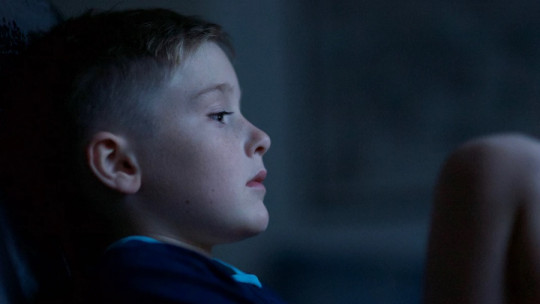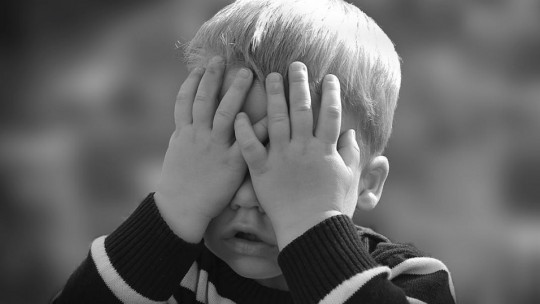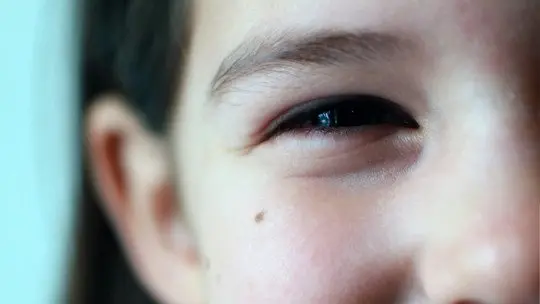Do you have a boy or girl diagnosed with autism in the classroom, and you don’t really know how to act with him/her? Are you a therapist and need a little guidance in this field? Do you have a friend or family member with autism (or your own child) and would you like to know how to treat him/her to improve her/his relationship with him/her so that you both feel comfortable?
In this article we will see a series of simple guidelines aimed at answering the question of how to treat an autistic child in order to enhance their strengths, improve their well-being and learn both in the process.
What characterizes children with autism?
Autism spectrum disorders (ASD) encompass, as the name itself indicates, different disorders within the same spectrum. They have classically been considered two large groups of autistic people: those with high functioning (Asperger Syndrome) and those with more altered functioning (the “classic” autistics). This second group is the one who, in addition to ASD, has been diagnosed with an associated intellectual disability.
In this article we will focus on the second group, and we will mention some guidelines on how to treat an autistic child.
Before addressing how to treat an autistic child, in order to improve their quality of life and interactions, we will see the central characteristics/symptoms of this diagnosis, which many of these children can manifest. For it We are based on the diagnostic criteria of the DSM-5 (Diagnostic Manual of Mental Disorders).
We believe it is necessary to know their characteristics and their way of being (although then each child is a world, logically, and has their own characteristics), to be able to understand why we have to act in one way and not another with them.
1. Difficulties in interactions and social communication
The first characteristic of children with ASD is a marked difficulty (or deficit) when interacting with others in a “normative” way. This translates into a deficit in emotional reciprocity (for example through anomalous social approaches, problems sharing interests and emotions, etc.
2. Repetitive and restricted patterns
The second symptom is the existence of one or more repetitive and restricted patterns, which have to do with: behaviors, interests, activities, actions… How does this manifest itself? For example through stereotypies, echolalia, hitting objects, rituals.
3. Occurrence at an early age of development
In ASD, The above symptoms usually appear at a very early stage of development (from a few years of age, in more serious cases).
4. Symptoms cause interference
Finally, the last criterion to be able to diagnose a case of autism is that the symptoms interfere with your daily life, in any of its spheres: at the school, social, emotional level…
How to treat an autistic child and why?
Regarding the question of how to treat an autistic child, the first thing we will say is something quite obvious, but it is worth highlighting: simply, We will treat them like the rest of the boys and girls in the fundamentals normally, with respect and empathy.
That is, we do not have to treat them differently, but it is true that we can act in a certain way to make things easier (or improve) for them in many ways; that they do not feel overwhelmed, that they feel understood, valued, etc. We can also act in a certain way so that they feel more comfortable, and so that they can strengthen all their potential.
In other words, it is about providing a “plus” to their well-being, their quality of life and their adaptive capacity, not treating them in a discriminatory way (neither in the positive nor in the negative sense). Besides, It is worth mentioning that many of these children can lead a practically normal life (or regulations), especially those who do not have an added intellectual disability.
Therefore, the guidelines we propose on how to treat an autistic child are the following.
1. Act from empathy
The first guideline that is quite obvious and general. Thus, it is a guideline that can be generalized to all children, and even adults. It is simply common sense to treat people with empathy.
So the first guideline arises from common sense; How are we going to treat them if not? From empathy, trying to understand how they feel at all times to adapt our behavior to each situation.
2. Anticipate situations or events
The second, more specific guideline consists of the following: anticipate the events of the day, the changes that may have arisen …
This will help reduce the levels of anxiety that autistic children frequently present, as a consequence of “not knowing what will happen” (since one of their characteristics is that they tend to be quite rigid, and also need planning, as we will see in the next point). .
3. Provide routines
Due to the characteristics of children with ASD, Routines are the key so that they do not feel anxious about what will happen (or what will not happen), and to put order in his world and in his mind (as we will also see later).
Thus, you can put this guideline into practice on how to treat an autistic child by developing schedules and routines with him/her, for example through a ceiling or cardboard (and having it hanging in his/her room or classroom).
4. Use alternative communication systems (if necessary)
Let us remember that up to 75% of children diagnosed with autism (not high-functioning autism, Asperger’s Syndrome), also have a diagnosed intellectual disability, which can be mild, moderate or severe.
In this sense, there is a group of children who also do not have language (they do not speak), but they do have communication. That is why in these cases we must use alternative communication systems, such as pictograms portable communicators, virtual keyboards… Everything will depend on the type of child and their characteristics.
5. Structure your activities
Whether you work with him/her (as a therapist, psychologist, educator…) or if you are his/her father or mother, or a family member, it can be very useful for you to structure the activities you do together.
They, in addition to needing routine and anticipation, they need guidelines, concrete guidelines, schedules, structure, planning … That helps them structure their sometimes somewhat chaotic mind, and their world too.
6. It greatly reinforces their positive behavior
It is also important reinforce appropriate behaviors, so that they increase in intensity, duration and frequency
For this, behavioral programs (or behavioral therapy, such as the ABA method, Applied Behavior Analysis) are very effective. These also include using behavioral strategies to reduce their inappropriate behaviors (for example extinction, response cost…).









